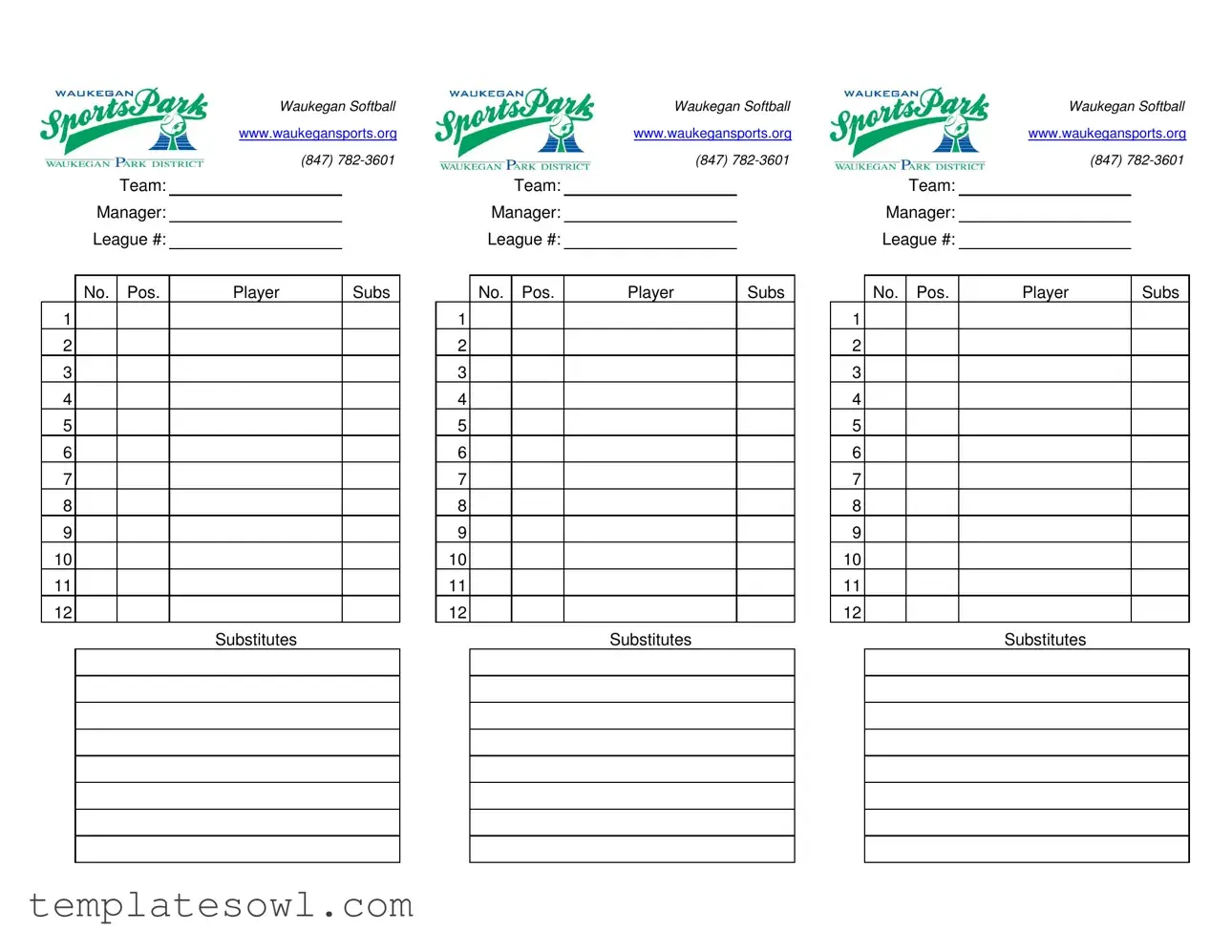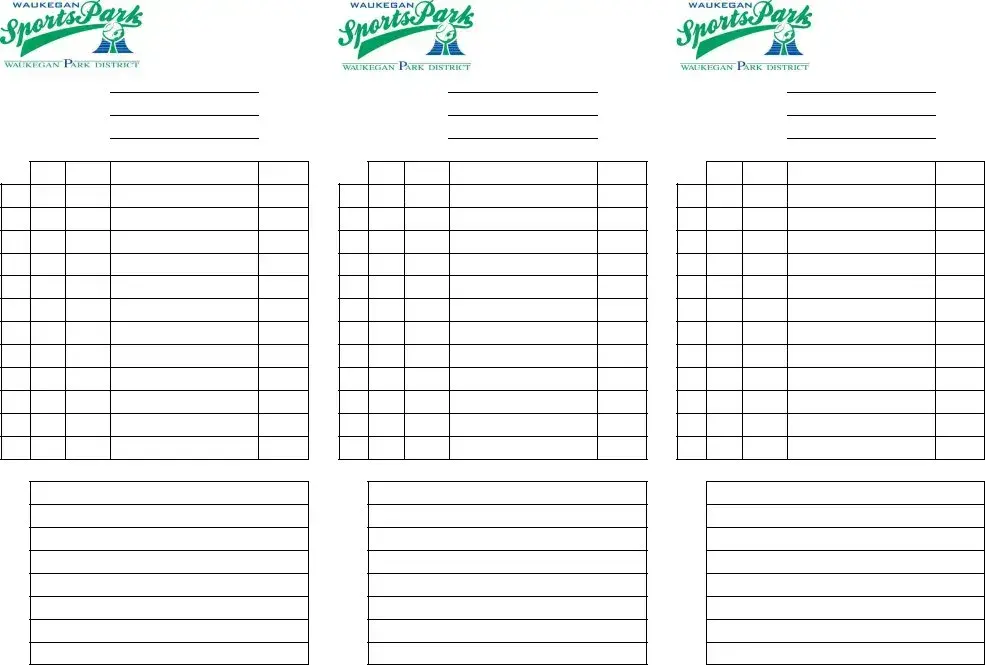What is the purpose of the Baseball Lineup Sheets form?
The Baseball Lineup Sheets form is designed to help managers organize their team for games. This form includes spaces for player names, positions, and substitutes. It allows everyone to clearly see who will be playing and who can step in if needed.
How do I fill out the Baseball Lineup Sheets form?
To complete the form, begin by filling in the team name, manager's name, and league number at the top. Next, list each player's name along with their assigned position in the provided columns. Lastly, use the designated sections to note any substitutes who may be available for the game.
Where can I find the Baseball Lineup Sheets form?
The form is available on the Waukegan Softball website, specifically under the resources or downloads section. You can also contact Waukegan Sports at (847) 782-3601 for any assistance in obtaining the form.
How many players can I list on the Baseball Lineup Sheets?
The form allows space for up to twelve players in the main lineup. Additionally, there is space provided for substitutes, ensuring that you can have backup players ready for the game.
Is there a deadline for submitting the Baseball Lineup Sheets?
It is generally expected that managers submit the lineup sheets prior to the start of the game. Check with your league for any specific deadlines or submission requirements that might apply.
Can I change my lineup after submitting the form?
Yes, lineups can often be adjusted, but the procedure may vary by league. Make sure to communicate any changes to the officials as soon as possible. This helps avoid any confusion during the game.
What happens if I do not have a completed Baseball Lineup Sheets form?
Failing to submit a completed form may lead to complications during the game. Teams might not be allowed to play, or they could face penalties. It’s best to ensure the form is filled out and ready to go.
Do I need to print the Baseball Lineup Sheets or can I submit it digitally?
The submission method can depend on the specific requirements of your league. Some leagues may allow digital submission, while others may require a printed copy. Always verify the preferred method with your league's officials.
Can I use the same Baseball Lineup Sheets form for multiple games?
While you can reuse the form format, it is important to fill out a fresh lineup sheet for each game. This ensures that all player positions and substitutes are up to date and reflect any changes in the team or roster.
Who do I contact if I have questions about the Baseball Lineup Sheets?
If you have questions regarding the Baseball Lineup Sheets, reach out to your league manager or the contact number provided on the form, which is (847) 782-3601. They can provide specific guidance and answer any concerns you may have.

